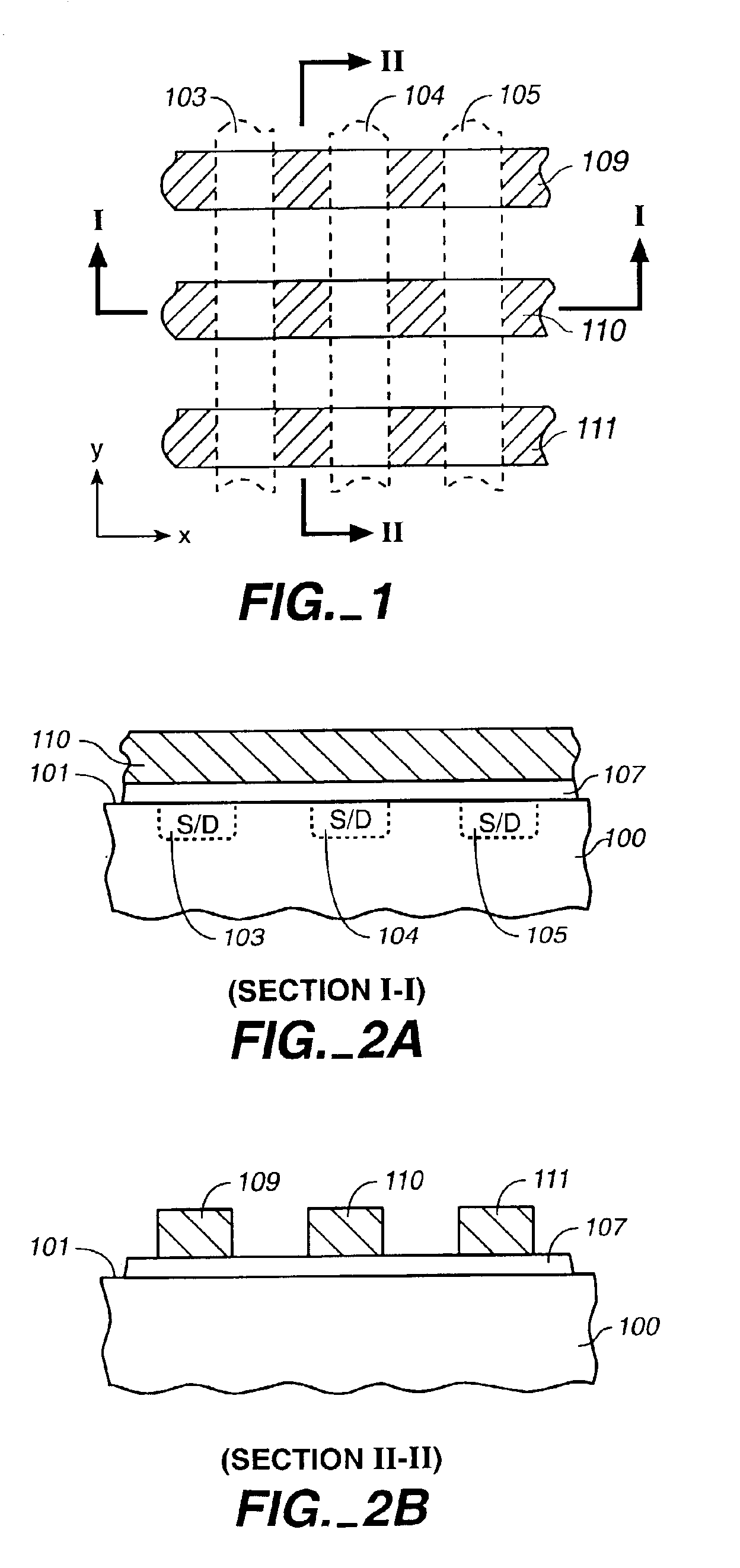Multi-state non-volatile integrated circuit memory systems that employ dielectric storage elements
a dielectric storage element and integrated circuit technology, applied in nanoinformatics, instruments, transistors, etc., can solve the problems of limiting the extent to which a given circuit layout can be shrunk, and the difficulty of performing both of these functions
- Summary
- Abstract
- Description
- Claims
- Application Information
AI Technical Summary
Benefits of technology
Problems solved by technology
Method used
Image
Examples
Embodiment Construction
[0050]Several specific memory cell configurations are described with respect to the drawings. In each of them, charge is stored in at least one region of a charge trapping dielectric that is positioned between a conductive gate and the substrate. These memory cell examples may be operated either in a binary mode, where one bit of data is stored in each charge storage region, or in a multi-state mode, where more than one bit of data is stored in each charge storage region.
First Memory Cell Example (FIGS. 1-6)
[0051]A few cells of a two-dimensional array of cells is illustrated in FIG. 1 in plan view, with orthogonal sections shown in FIGS. 2A and 2B. Elongated, parallel source and drain diffusions 103, 104 and 105 are formed in a surface 101 of a semi-conductor substrate 100, with their lengths extending in the y-direction and are spaced apart in the x-direction. A dielectric layer 107 including a charge storage material is formed on the substrate surface 101. Elongated, parallel cond...
PUM
 Login to View More
Login to View More Abstract
Description
Claims
Application Information
 Login to View More
Login to View More - R&D
- Intellectual Property
- Life Sciences
- Materials
- Tech Scout
- Unparalleled Data Quality
- Higher Quality Content
- 60% Fewer Hallucinations
Browse by: Latest US Patents, China's latest patents, Technical Efficacy Thesaurus, Application Domain, Technology Topic, Popular Technical Reports.
© 2025 PatSnap. All rights reserved.Legal|Privacy policy|Modern Slavery Act Transparency Statement|Sitemap|About US| Contact US: help@patsnap.com



